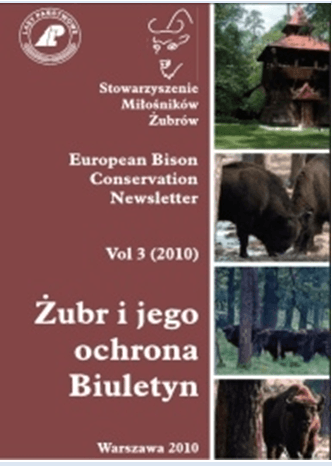Do European bison bulls in Białowieża Forest differ in their rutting behaviour depending on age?
Keywords:
Bison bonasus, reproduction, rutting season, male, behaviourAbstract
In species with highly competitive typical pattern of male mating behaviour, some males may adopt different and non-competitive behavioural patterns which allow them to increase their chances of participating in reproduction. The behavioural pattern adopted may depend on the male’s size; however, the status of individuals of similar sizes varies with population parameters. In European bison Bison bonasus (L.), males aged 4–6 years are sexually mature, but do not participate in breeding when older bulls are present. The free-living bison population in the Polish part of the Białowieża Forest was studied between 1972–2001. The number of adult females per adult male had increased in the last decade of this period but the level of reproduction remained stable. This might result from lengthening of the rutting season and the occurrence of different behavioural patterns among younger bulls, enabling them to participate in reproduction. During a radiotelemetry study between 1999–2002, in the rutting season the peaks of spatial activity of younger (5–6 years old) and older (>=7 years old)
bulls were asynchronous and younger bulls visited more groups with females and spent more time in them than did older males. The stable level of population reproduction may confirm that as the cows: bull ratio is increasing; some younger bulls do participate in breeding, presumably because of different behavioural patterns during the rutting season.
Downloads
Published
How to Cite
Issue
Section
Categories
License
Copyright (c) 2010 Katarzyna Daleszczyk, Elżbieta Czykier

This work is licensed under a Creative Commons Attribution 4.0 International License.





